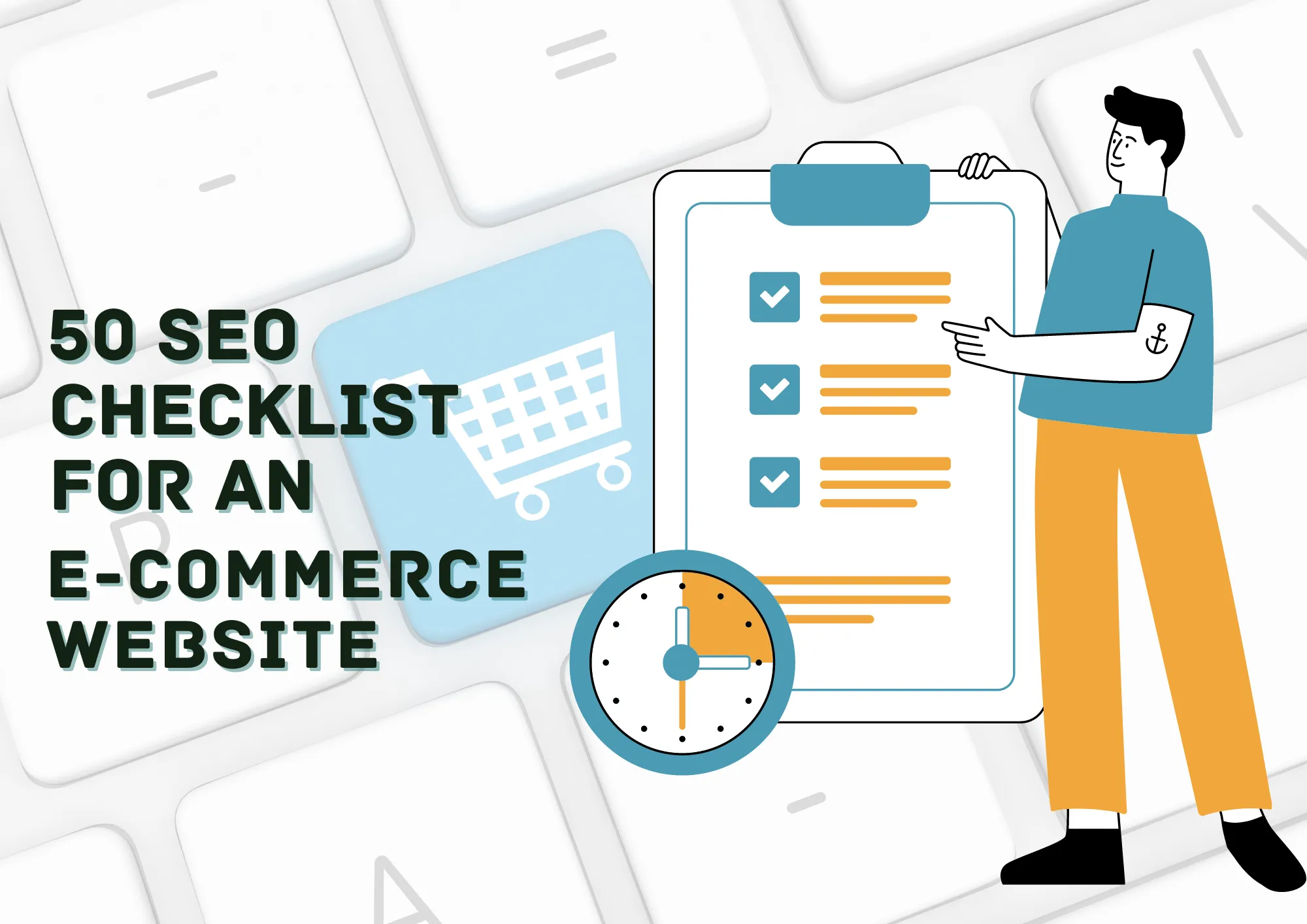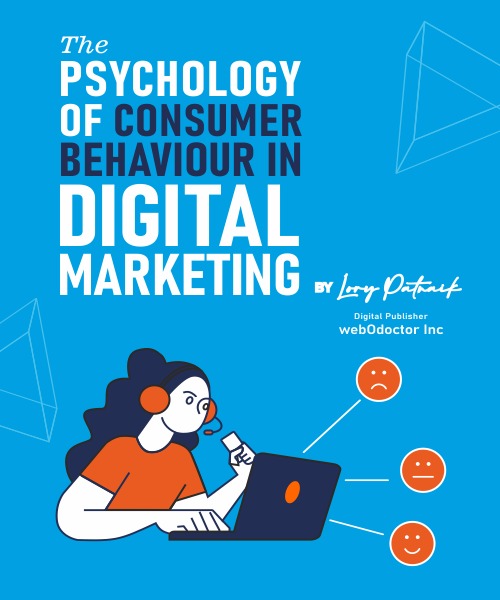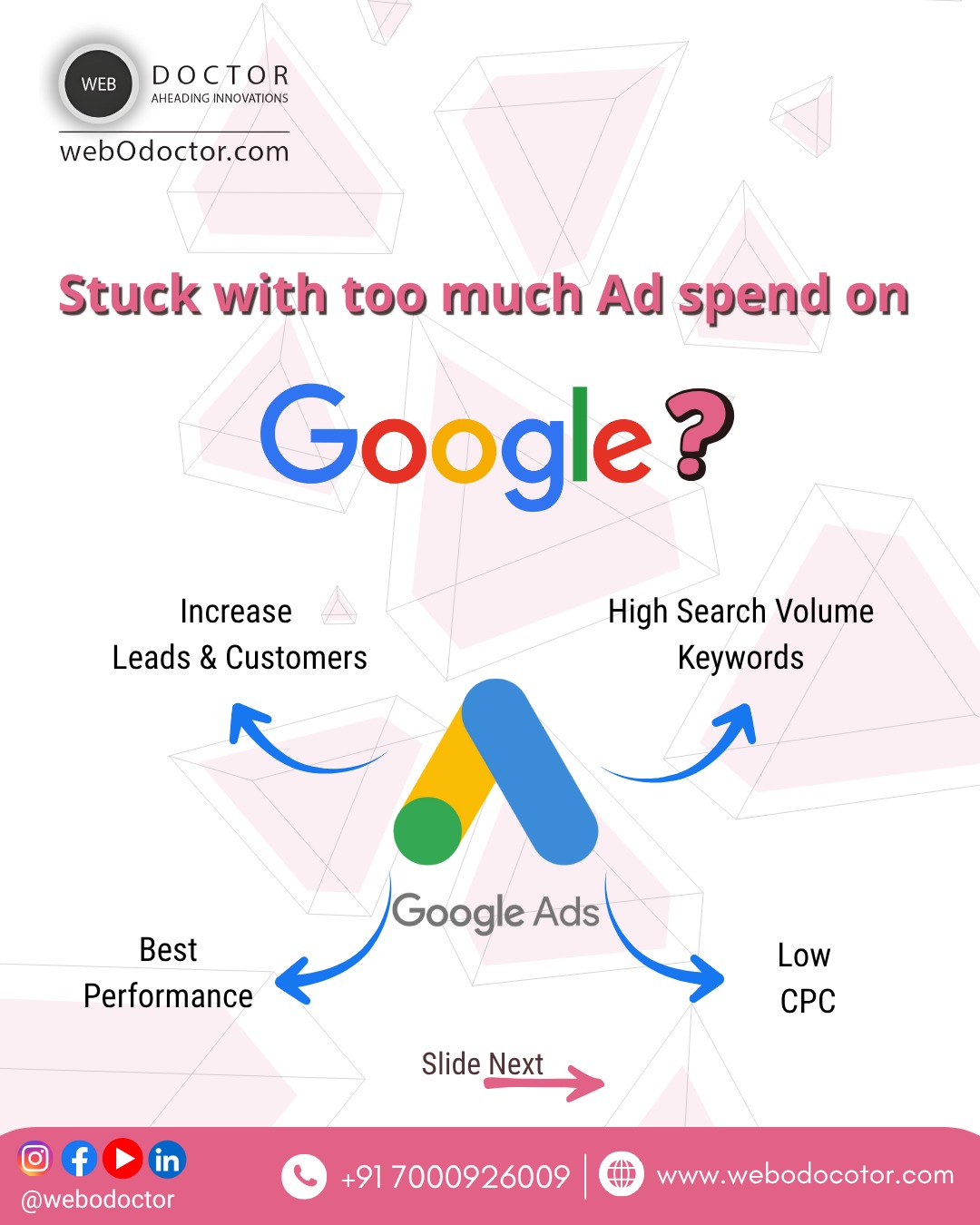
50 Seo Checklist For An Ecommerce Website
Welcome to our comprehensive guide on optimizing your e-commerce website for search engines! webOdoctor the best SEO service providers in India have compiled a checklist of 50 SEO strategies that will help you drive more organic traffic and boost your online sales. Whether you are a seasoned e-commerce entrepreneur or just starting, these tried-and-tested techniques will ensure that your website stands out in a crowded digital marketplace.
What is SEO?
Often referred to as Keyword, traffic boost, and much more, many people relate to these terms if they wish to do SEO for their websites. But let us understand the technical meaning of SEO and how it nurtures your business. SEO is the practice of optimizing your site and web pages to improve their visibility on search engines like Google. SEO aims to enhance a website’s organic (non-paid) search engine rankings for relevant keywords. This involves various strategies and techniques, including:
- Keyword research
- On-Page Optimization
- Off-Page Optimization
- Technical SEO
- Content Creation
- User Experience ( UX)
In digital marketing, it is always better to use a thorough SEO Checklist that will ensure your business grows. When it's an e-commerce business, it is even more crucial to move ahead with a proper checklist.
Importance of SEO for E-commerce Businesses
SEO (Search Engine Optimization) is crucial for e-commerce businesses. With millions of online stores competing for attention, it's essential to optimize your website to rank higher in search engine results. Higher rankings mean increased visibility, more organic traffic, and ultimately, more sales. By implementing SEO strategies, you can attract qualified visitors who are actively searching for products or services you offer, leading to higher conversion rates.
Optimizing your e-commerce website for search engines is a long-term investment. It helps you establish authority, build brand credibility, and gain a competitive edge. Additionally, SEO ensures that your website provides a seamless user experience, making it easier for potential customers to find what they need and navigate through your site, ultimately leading to higher customer satisfaction and repeat business.
SEO Checklist for Website Structure and Navigation
- User-friendly website structure: Ensure your e-commerce website has a clear and logical structure that makes it easy for users and search engines to navigate. Use descriptive categories, subcategories, and breadcrumbs to improve user experience and help search engines understand the hierarchy of your site.
- Sitemap creation: Create an XML sitemap and submit it to search engines to help them crawl and index your website effectively. Make sure your sitemap is regularly updated to include new pages or changes to existing ones.
- URL optimization: Use descriptive and keyword-rich URLs that accurately represent the content of each page. Avoid using generic URLs with numbers or special characters. Incorporate relevant keywords in your URLs to improve search engine visibility.
- Security Seals- Take proper HTTPS and always renew your SSL. Google actively encourages HTTPS as it’s a confirmed ranking factor.
- Show off your reviews- Google wants to add more weight to insightful reviews so just don’t skip to encourage reviews and ratings from your customers or buyers.
On-Page Optimization Checklist for E-commerce Websites
- Keyword research: Conduct thorough keyword research to identify the most relevant and high-converting keywords for your e-commerce store. Use keyword research tools to find long-tail keywords and variations that your target audience is likely to search for. Try to use keywords very strategically in your content.
- Optimized meta tags: Craft compelling meta titles and descriptions that incorporate your target keywords and entice users to click on your search results. Keep your meta tags concise, informative, and unique for each page.
- Heading tags: Nail your headline and Use heading tags (H1, H2, H3, etc.) to structure your content and highlight important sections. Incorporate relevant keywords in your headings to improve search engine visibility and enhance user experience.
- Have an HTML Site Map: With this, you will get a proper clear, and easy-to-read format. The user can click on the link if they are looking for a detailed analysis.
- Customize your URL to include the keyword- Make a descriptive URL including the keyword. This will help you boost SEO and click-through rates.
Keyword Research and Optimization for E-commerce SEO
- Competitor analysis: Analyze your competitors' websites to identify the keywords they are targeting and ranking for. Use this information to refine your keyword strategy and discover new keyword opportunities.
- Long-tail keywords: Target long-tail keywords that are more specific and have lower search volume but higher conversion potential. Long-tail keywords often indicate strong purchase intent and can help you attract highly relevant traffic.
- Keyword optimization: Incorporate your target keywords naturally throughout your website's content, including product descriptions, category pages, blog posts, and URLs. Avoid keyword stuffing and ensure that your content remains engaging and valuable to users.
- Leverage Question-based Keywords: Most search queries and made in the form of questions. So one needs to create content that meets user intent and ranks the Google SERP feature. Eventually, this will rank in voice search.
- Placement of Keywords- Most companies just abruptly place keywords that have a bad impact on the SEO. Avoid this and try to place keywords that never distort the readability.
Product Page Optimization Checklist for E-commerce Websites
- Unique product descriptions: Write unique and compelling product descriptions that highlight the features, benefits, and unique selling points of each product. Avoid using manufacturer-provided descriptions as they are often duplicated across multiple websites.
- Optimized product titles: Craft descriptive and keyword-rich product titles that accurately represent the product and include relevant keywords. Keep your titles concise and easy to read.
- High-quality product images: Use high-quality images that showcase your products from different angles and in various contexts. Optimize your images by compressing them without compromising quality and adding relevant alt tags.
- Only three Navigation Click- Having pages that take more than three clicks to reach is not good. This is a poor indicator that your website has a poor search engine value. However, this three-click rule may not be apt for all websites but in maximum cases it is applicable.
- Build Topic Clusters- Topic clusters are a group of relevant topic pieces and need two important aspects: Pillar Page and Subtopic Pages.
a) The Pillar Page is the hub of the topic cluster and provides the main subject in-depth.
b) Sub Topic Pages are the pieces of content you create to provide in-depth coverage of a single aspect of the main coverage and link to the pillar page.
Technical SEO Checklist for E-commerce Websites
- Website speed optimization: Optimize your website's loading speed by compressing images, minifying CSS and JavaScript files, and leveraging browser caching. A faster website improves user experience and boosts search engine rankings.
- Mobile responsiveness: Ensure that your e-commerce website is fully responsive and mobile-friendly. With the increasing number of users accessing the internet through mobile devices, mobile optimization is essential for SEO and user experience.
- Structured data markup: Implement structured data markup (schema.org) to provide search engines with additional information about your products, such as pricing, availability, and reviews. This can enhance your search engine listings and improve click-through rates.
- Focus on Search Intent- Conduct thorough research on the content and then curate the same. Find content that users find most valuable and this will surely drive quality traffic to your website, improving the quality of your leads and reducing the bounce rates.
- Create Compelling Meta Description- This short blurb or summary provides a purpose to your buyer with an overview of the content to expect on that particular page. How to craft a compelling meta description-
- Include Keyword
- Keep it up to 160 characters
- Make it as descriptive as possible
Mobile Optimization Checklist for E-commerce SEO
- Responsive design: Use a responsive design that adapts to different screen sizes and devices. This ensures that your website looks and functions well on smartphones, tablets, and other mobile devices.
- Mobile-friendly navigation: Optimize your navigation for mobile users by using a hamburger menu or other mobile-friendly navigation options. Make it easy for users to find what they're looking for without excessive scrolling or tapping.
- Page speed optimization: Improve your website's loading speed on mobile devices by optimizing images, reducing server response time, and minimizing the use of large files or scripts that can slow down page rendering.
- Image Optimization- Images still carry some weight so follow a proper optimization technique for them
- Resize your image
- Compress the image
- Add alt tags to all images, ensuring they include keywords
Don’t forget tags and Categories- Tags and Categories are often overlooked but this helps your user to reach you out effectively. If you tend to forget these reach out to the best SEO service providers in India and have a round of technical discussion with them about what challenges you are facing to get your e-commerce business a strong visibility.
Link building and Off-Page Optimization Checklist for E-commerce Websites
- Guest blogging: Write high-quality guest posts on relevant blogs and websites to build backlinks and increase your website's authority. Focus on providing valuable and informative content that demonstrates your expertise and attracts natural links.
- Social media engagement: Engage with your audience on social media platforms to build brand awareness and increase the visibility of your e-commerce store. Share valuable content, respond to comments and messages, and encourage social sharing.
- Influencer partnerships: Collaborate with influencers in your industry to promote your products and gain exposure to their followers. Influencer marketing can help you reach a wider audience and generate valuable backlinks.
- Long Tail Keyword Approach- The long tail keywords work out well. These usually have lower competition, better conversion rates, and more targeted. Now, the easy way to find the long tail keywords includes getting it from right from – the Google Auto Suggest feature, Forums, Blog Comments and Answer the Public.
- Build a good Internal Linking Strategy- This plays a crucial role in SEO and helps search engines to better understand the SEO structure. The user gets a lot of value from the content as they point them to other pages with more context. Sometimes building internal links with over a hundred pages can be quite tedious so take the help of tools that help you navigate the strategy effortlessly – Link Assistant and Feature Manager section of any plugin that is relevant to Word Press E-commerce website is effective.
Tracking and Measuring SEO Success for E-commerce Businesses
- Google Analytics: Set up Google Analytics to track and measure important metrics such as organic traffic, conversion rates, bounce rates, and average session duration. Use this data to identify areas for improvement and optimize your e-commerce website accordingly.
- Conversion tracking: Implement conversion tracking to measure the effectiveness of your SEO efforts. Track key actions such as purchases, newsletter sign-ups, and form submissions to determine the ROI of your SEO campaigns.
- Regular audits and monitoring: Conduct regular SEO audits to identify any technical issues, broken links, or duplicate content that may be affecting your website's performance. Monitor your rankings, traffic, and user behavior to stay on top of any changes and make necessary adjustments.
- Invest in good keyword research tools- Keywords are relevant and will continue to be so. Without them SEO ranking will not exist so here we have for you some of the best tools that you need to follow during your SEO work-
- Ahref
- Semrush
- Ubersuggest
- Moz
- Speed is the Key to any e-commerce website- This is a single item under UX and remember slow website kills conversion. Google Page Speed Tool, Test your mobile Speed tool can be used to have a broader look at your mobile speed. This may be a worthwhile strategy for accessing your tactics.
Crawling and Indexing
Crawling refers to the process where search engine bots or spiders visit and explore the various pages of your website. These bots follow links from one page to another, collecting information about your website's content, structure, and other relevant data. Once the crawling process is complete, the search engine indexes the collected information, making it available for search queries.
Proper crawling and indexing are crucial for e-commerce websites as they directly impact your website's visibility in search engine results pages (SERPs). If search engines can't crawl and index your website effectively, your online store may not appear in relevant search results, resulting in missed opportunities for organic traffic and potential customers.
- How search engines crawl and index websites:
The crawling process begins with search engine bots visiting a website's homepage and following links to other pages. These bots analyze the content, structure, and other factors of each page they visit. The information collected during the crawling process is then indexed, allowing search engines to retrieve and display relevant pages when users search for specific keywords or phrases.
During the crawling process, search engine bots prioritize pages that are more likely to receive organic traffic, have high-quality content, and follow best practices for search engine optimization. Understanding how search engines crawl and index websites are crucial for optimizing your e-commerce site and improving its visibility in search results.
- Common crawling and indexing issues faced by eCommerce websites:
- Duplicate content: E-commerce sites often have multiple pages with similar or identical content, such as product descriptions, category pages, and filtered search results. Search engines may struggle to determine which version of the content to show in search results, resulting in lower visibility.
- Thin or low-quality content: E-commerce websites sometimes have product pages with minimal content or low-quality descriptions. This can make it challenging for search engines to understand the relevance and value of these pages, leading to lower rankings.
- Slow page loading speed: If your e-commerce site has slow-loading pages, search engine bots may not be able to crawl and index your content efficiently. This can negatively impact your website's visibility in search results.
- Broken links and crawl errors: Broken links and crawl errors can prevent search engine bots from navigating and indexing your website properly. It's essential to regularly monitor and fix any broken links or crawl errors to ensure optimal crawling and indexing.
- Best practices for optimizing crawling and indexing for eCommerce website
- Using robots.txt and XML sitemaps for better crawling and indexing:-
A robots.txt file is a text file placed in the root directory of your website to provide instructions to search engine bots. By properly configuring your robots.txt file, you can control which pages search engines can crawl and index, ensuring that they focus on your most important content. Additionally, XML sitemaps help search engines discover and understand the structure and content of your website. Including XML sitemaps can facilitate better crawling and indexing of your e-commerce site.
- Importance of site structure and internal linking for effective crawling and indexing:-
The structure of your e-commerce website plays a crucial role in how search engines crawl and index your content. A clear and logical site structure helps search engine bots navigate your website easily, ensuring that all relevant pages are discovered and indexed. Additionally, internal linking between your web pages helps search engines understand the relationships between different pages, boosting their visibility in search results.
- Mobile optimization and its impact on crawling and indexing for eCommerce
With the increasing use of mobile devices, optimizing your e-commerce website for mobile is essential. Search engines prioritize mobile-friendly websites in their search results. If your website is not mobile-optimized, it may not rank as high in search results, resulting in lower visibility and potential traffic. Ensure that your e-commerce site is responsive and provides a seamless experience across different devices.
- Monitoring and troubleshooting crawling and indexing issues
Regularly monitoring your website's crawling and indexing performance is crucial to identify and address any issues promptly. Use tools like Google Search Console to analyze crawl errors, index coverage, and other relevant metrics. By proactively monitoring and troubleshooting crawling and indexing issues, you can ensure that your e-commerce website performs optimally in search results.
By following this comprehensive SEO checklist for e-commerce websites, you can optimize your online store for search engines, attract more qualified visitors, enhance user experience, and increase conversions. Remember, SEO is an ongoing process, so make sure to regularly review and update your strategies to stay ahead of the competition.
If you're ready to take your e-commerce store to the next level and dominate the search results, start implementing these SEO strategies today!
















 Bhopal(India)
Bhopal(India)
 Düsseldorf(Germany)
Düsseldorf(Germany)